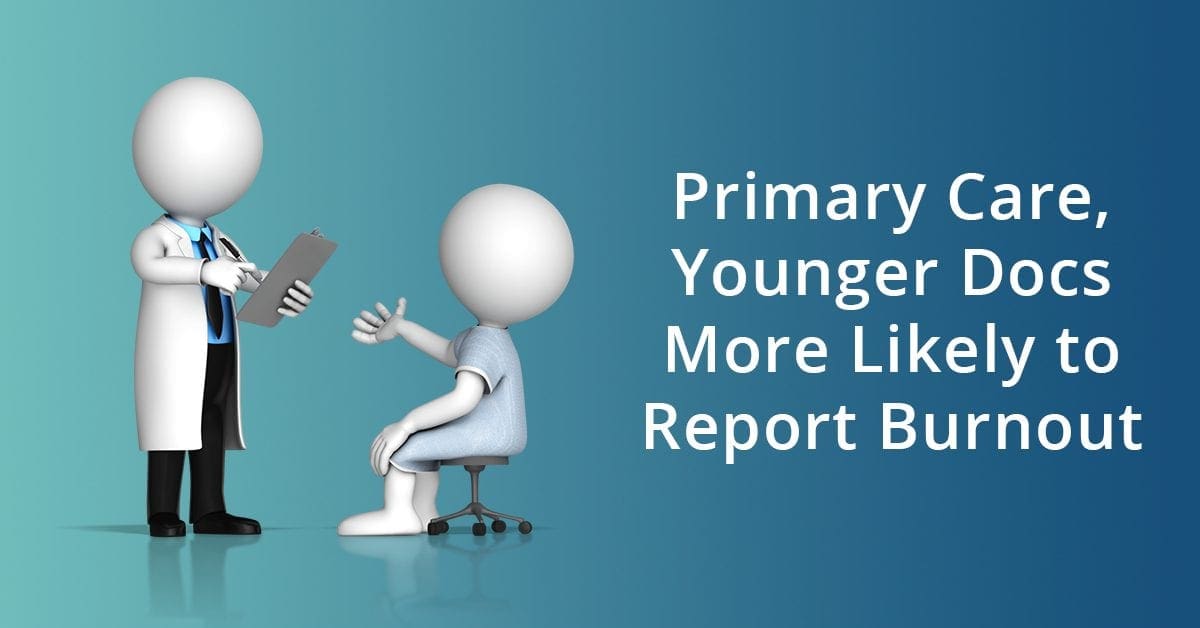Call us toll-free: 800-878-7828 — Monday - Friday — 8AM - 5PM EST

By Shannon Muchmore for Healthcare Dive
Dive Brief:
- Nearly 80% of primary care physicians and 57% of specialists reported some level of burnout in a recent online survey of more than 600 physicians conducted by InCrowd, a vendor of market research for life sciences companies.
- Burnout rates were highest among younger physicians — 70% for physicians in their 30s and 74% for physicians in their 40s — while rates dropped with successively older groups of physicians. Survey respondents between the ages of 70 and 80 had the lowest rate of 22%.
- A minority, or 25%, of survey respondents, said their worksites effectively address burnout, citing initiatives that improve workflow and reduce administrative burden (46%), provide flexible scheduling and/or generous vacation time (45%) and support wellness (41%).
Dive Insight:
Provider burnout has been a long-running challenge health systems and clinicians, with the potential to harm patient care and provider well-being.
It also can be costly. For example, a recent study published in the Annals of Internal Medicine calculated annual burnout costs between $2.6 billion and $6.3 billion, including costs from staff turnover, lower productivity and other factors.
Numerous factors are at play: upheavals in practice structures and routines through consolidation, heavy documentation and charting workloads, the prevalence of EHRs, and policy and regulatory requirements.
The new study calculates burnout rates that are higher than some other recent studies, although finding consistency among research, often with different methodologies, is difficult. A Medscape study in early 2018 put the figure at almost two-thirds, while another Medscape study published earlier this year found that 44% of physicians experienced burnout.
Meanwhile, the American Medical Association released a study this year finding 44% of U.S. physicians reported at least one symptom of burnout in 2017, down from 54% in 2014 and 46% in 2011. The study, published in Mayo Clinical Proceedings, included results from more than 5,000 physicians.
To arrive at its estimates, InCrowd fielded a five-minute, online survey in June. Survey respondents were nearly equally divided among primary care physicians (51%) and specialists (49%), with 72% working in private practices and 28% in hospitals.
Among the 75% of physicians who said their organizations do not effectively address burnout, 53% cited the lack of action and acknowledgment of the problem. Smaller percentages mentioned other factors, including minimal resources to offload tasks or provide support (15%), a cultural emphasis on the bottom line over well-being (15%), and burdensome workloads and understaffing (11%).
The government and industry are beginning to address the problem.
For example, CMS in June called on the public to submit suggestions for how to reduce the administrative burden on providers. Agency officials said they are particularly interested in ideas targeting reporting and documentation requirements, prior authorizations and enrollment and eligibility determinations.
The current RFI follows one CMS issued in 2017. So far, the agency has addressed 83% of the “actionable items” submitted in the 2017 RFI, which generated feedback from more than 2,000 stakeholders in 23 states, CMS said.
Some health systems also are developing initiatives to address burnout, such as hiring chief wellness officers or reducing the number of alarms and messages generated by EHRs.
